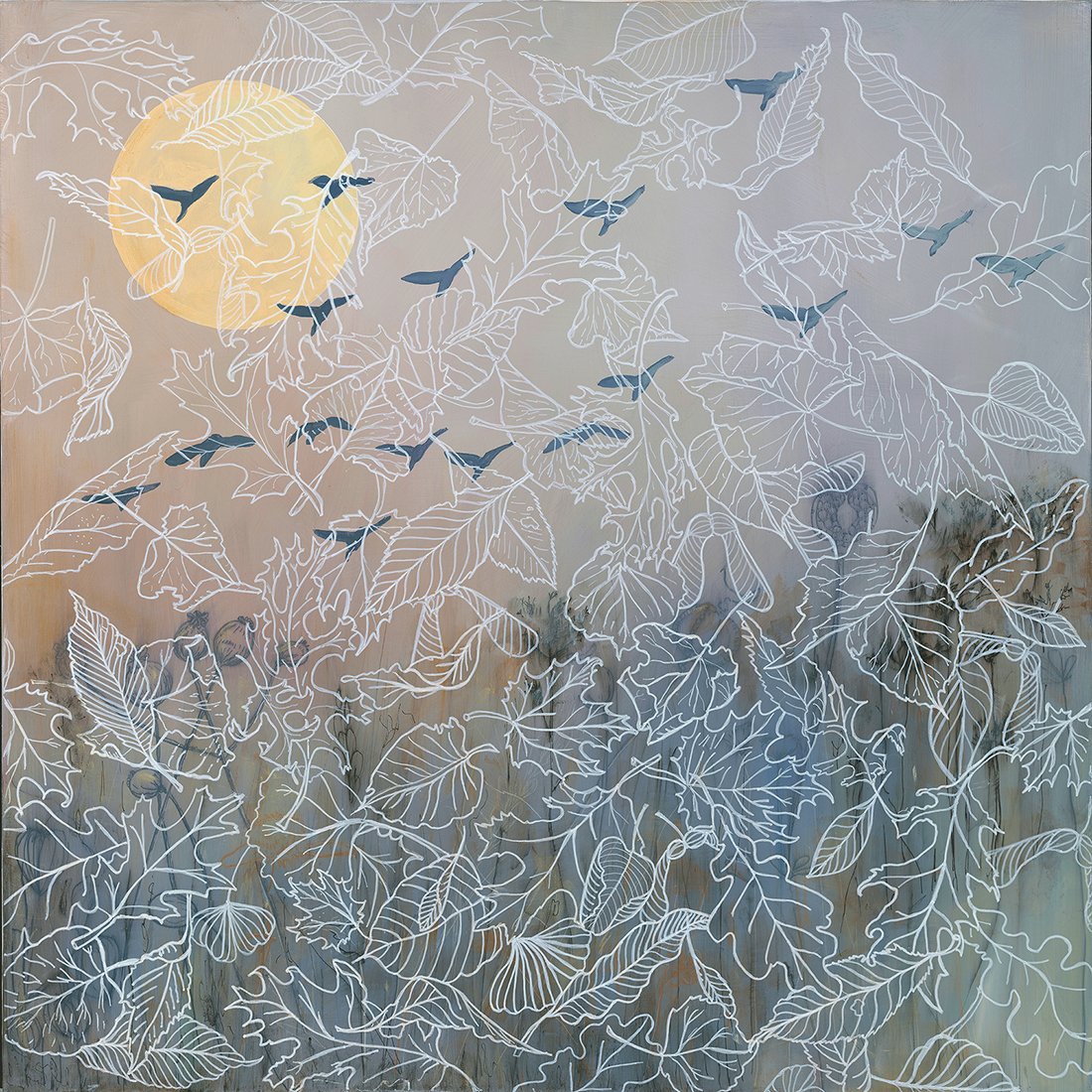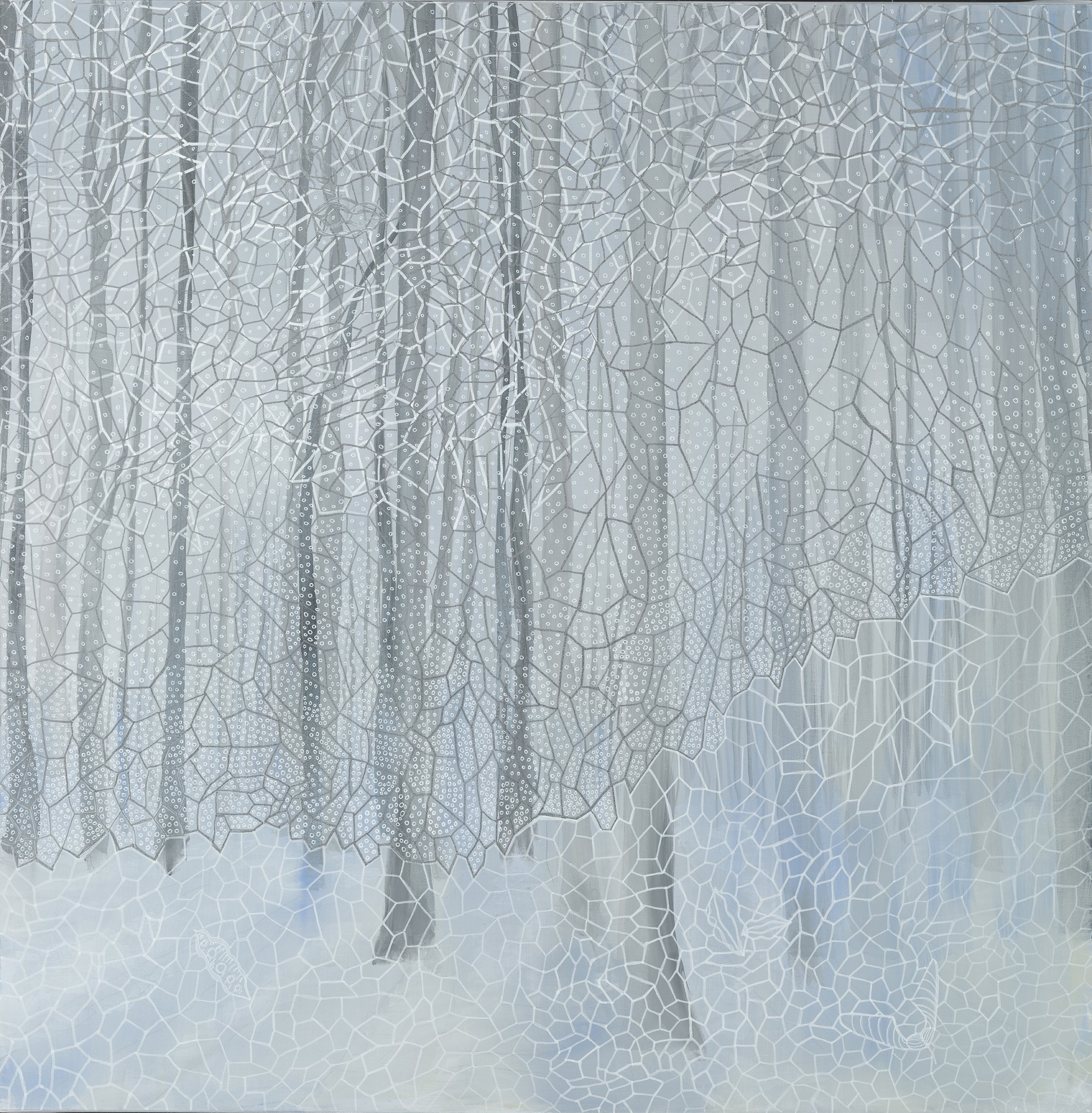New Morning
Back in the 1970s, whenever I felt the excitement of a new idea or a new adventure, I would play my vinyl recording of Bob Dylan’s New Morning on our old turntable. Some days, I’d play it over and over, belting out “so happy just to be alive, underneath the sky of blue, on this new morning, new morning…” along with the music.
That was a very long time ago, but I still feel the same exploding energy whenever I feel the eureka moment of a brand-new idea. And sometimes these ideas present themselves in the most unexpected places.
Last winter, for instance, Doug and I were shopping for a Christmas tree at a local farm-stand—they have those things up here in our part of Massachusetts—when a flock of birds flew by. The sky was steel grey and the birds—geese maybe—made graceful silhouettes overhead. They knew where they were going, and what they were doing, announcing the changing season to me on a primal level. I snapped a couple of quick photos on my phone and then turned back to the task at hand. We found the perfect, sweet-smelling balsam fir, tied it to the car roof, and brought it home.
Over the next few days, those birds and images of the rhythms of nature kept inserting themselves into my everyday thoughts. I had been spending long hours in the studio for the past few months, creating paintings for my exhibition, Seeds of Change, which was scheduled to open soon. The exhibit focused on life cycles of plants and seeds as a metaphor for the “seeds of ideas” buried deep within humankind. I wanted to suggest that if we nurtured these seeds of ideas, they might “flower” and revive our collapsing ecosystem. By mid-December, I thought I was just about ready to ship these seed paintings off to New York City.
But these birds. They were haunting me. They represented the natural order of things. They were evidence of the changing seasons of life. And I felt compelled to include the birds in a new painting. Just one more image would be okay, right?
The painting became a story of seasonal change: birds flying south, wildflowers turning brittle, leaves and seeds falling to the ground. In my mind, the seeds would nestle low in the comfort leaf mold, where they would rest, sleeping, waiting for the cycle of life to resume. I called the painting, When Seeds Lie Low and Cold.
And then I thought I was done.
But after just a few days, I began thinking about the next step in a life cycle. Winter. Winter isn’t just a useless time of dormancy. It serves an important purpose. Real seeds have a hard coating to protect the magic of life within them until conditions are right for germination. The cold winter sets the conditions for their emergence in the spring. Changing temperature combines with the moisture of the melting snow to soften and weaken the seed coat just enough to let the embryonic seedlings to break through in the spring.
I began playing Dylan again – though as an MP3 and not a record anymore. When Seeds Lie Low and Cold definitely needed a companion. And soon I completed a painting that told a story of hidden seeds preparing for spring beneath crystalized layers of ice and snow. I called the new one The Winter of Our Discontent and was pleased to have a pair of images not quite like any others I had made before.
If you heard the music in the studio the next day, you would have easily guessed what was going on. Another painting—this one in the fragile colors of early spring—was turning the pair into a seasonal triad. Called Vernal Equinox, it told the story of human gestation within a mass of unfolding leaves, to remind us that we are part of nature, and not apart from nature.
Of course, it was quickly followed by one with warmer colors. The leaves now had fruits, and flowers, and surrounded a nursing mother nurturing her newborn—as we should nurture the living things on our planet. I called the summer painting Emerging Hope. And it was only then, that I knew I was done.
The four became a fourteen-foot installation in my solo exhibition, Seeds of Change: Paintings of Climate Change and Hope, at New York City’s Pleiades Gallery. Through the four seasons, the installation suggested that seeds of hope lie buried deep within us. We made this mess. And we alone have the potential to change our planet’s trajectory from ecological disaster into environmental stability. If we plant the seeds today. We can make it a New Morning if we try.
The four panels, as installed in The Seeds of Change. Pleaides Gallery, 547, W27th St., NY, NY 10001, March 25-April 15, 2023.



